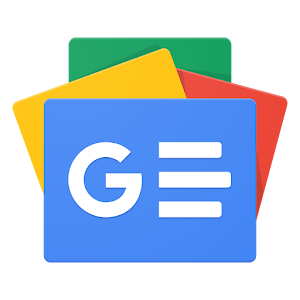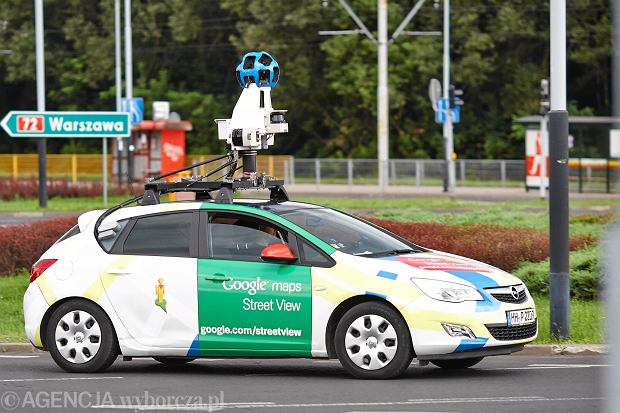Blog
The Great AI Showdown: A Comprehensive Comparison of Gemini, ChatGPT, Grok, DeepSeek, Meta AI, and the Specialised PentestGPT

In the burgeoning landscape of artificial intelligence, a handful of titans are vying for supremacy, each with its unique strengths, philosophies, and technological underpinnings. From the multimodal prowess of Google’s Gemini to the conversational finesse of OpenAI’s ChatGPT, the real-time insights of xAI’s Grok, the coding acumen of DeepSeek, and the open-source power of Meta AI’s Llama 3, the choice for businesses, developers, and everyday users has never been more complex. And in the specialised corners of this expansive field, tools like PentestGPT are carving out niches that redefine professional workflows. This comprehensive analysis will delve deep into the features, performance, and core philosophies of these leading AI models, offering a granular comparison to help you navigate this intricate and rapidly evolving domain.
The Contenders at a Glance
Before we dive into the intricate details, here is a comparative table that summarises the key characteristics of each AI model.
| Feature | Gemini (Google) | ChatGPT (OpenAI) | Grok (xAI) | DeepSeek | Meta AI | PentestGPT |
|---|---|---|---|---|---|---|
| Developer | OpenAI | xAI | DeepSeek AI | Meta | Independent Researchers | |
| Primary Focus | Multimodal integration with Google’s ecosystem. | Versatile, conversational AI for a broad audience. | Real-time information access with a witty personality. | High-performance, open-source code generation. | Powerful, open-source models for developers. | AI-assisted penetration testing for cybersecurity. |
| Latest Major Model | Gemini 1.5 Pro | GPT-4o | Grok-2 | DeepSeek Coder V2 | Llama 3 | GPT-4 based |
| Multimodality | Native (Text, Image, Audio, Video, Code) | Advanced (Text, Image, Audio) | Limited (Text, some Image) | Primarily Code | Primarily Text | Text-based guidance |
| Key Strength | Massive context window; deep ecosystem integration. | Conversational fluency; user-friendly interface. | Real-time data from X (Twitter); unique personality. | Exceptional coding prowess; cost-effective. | Open-source flexibility; strong community support. | Specialised cybersecurity workflow guidance. |
| Ideal User Profile | Google Workspace users, researchers, enterprise. | General users, writers, marketers, developers. | Journalists, social media managers, news followers. | Software developers, data scientists. | Developers, researchers, AI enthusiasts. | Penetration testers, cybersecurity professionals. |
| Access Model | Free tier; ‘Gemini Advanced’ subscription. | Free tier; ‘Plus’ subscription for GPT-4o. | Subscription to X Premium+ required. | Open-source models; paid API access. | Open-source (free for research & commercial use). | Open-source tool, requires OpenAI API key. |
Core Architecture and Its Implications
The underlying architecture of these models plays a pivotal role in their performance, efficiency, and cost-effectiveness. While most of the leading models are based on the transformer architecture, variations in their implementation lead to significant differences.
A notable architectural innovation is the Mixture-of-Experts (MoE) model, employed by both DeepSeek and Grok. Unlike a single, monolithic model that processes all information, an MoE architecture consists of numerous “expert” sub-networks, each specialising in different types of data or tasks. When a query is received, the model dynamically routes it to the most relevant experts. This approach has two primary benefits:
- Increased Efficiency: Only a fraction of the model’s total parameters are activated for any given task, significantly reducing the computational cost and improving inference speed.
- Enhanced Specialisation: By having experts trained on specific domains (e.g., coding syntax in different languages), the model can achieve a higher degree of accuracy and nuance in its responses.
DeepSeek’s success in the coding domain can be largely attributed to its effective implementation of MoE, allowing it to train a vast model that remains nimble and highly specialised. Similarly, Grok’s ability to process real-time information and respond with alacrity is supported by its MoE architecture.
In contrast, models like ChatGPT and the base versions of Gemini have traditionally used a dense model architecture, where all parameters are engaged for every task. While this can lead to a more generalised and robust understanding, it is often less efficient. However, it’s worth noting that both OpenAI and Google are actively researching and implementing their own forms of conditional computation to reap the benefits of a more dynamic approach.
Meta AI’s Llama 3, while also a transformer-based model, has focused on optimising its architecture for a balance of performance and accessibility, making it a powerful foundation for developers to build upon.
Multimodality: The Next Frontier
The ability to understand and process multiple forms of information – text, images, audio, and video – is a key differentiator for the latest generation of AI models. In this arena, Google’s Gemini and OpenAI’s ChatGPT-4o are the clear frontrunners.
Gemini 1.5 Pro, with its native multimodality, can seamlessly analyse and reason across different data types in a single prompt. For example, a user could provide a video of a tennis match and ask Gemini to identify unforced errors, explain the strategic nuances of a particular rally, and even suggest drills to improve a player’s backhand, all within the same interaction. Its massive 1 million token context window further enhances this capability, allowing it to process and understand vast amounts of information from various sources simultaneously.
ChatGPT-4o represents a significant leap forward for OpenAI in the multimodal domain. While previous versions could handle images and voice separately, GPT-4o integrates these capabilities more fluidly, enabling real-time voice conversations that can perceive and react to visual cues. Users can, for instance, have a spoken conversation with the AI while pointing their phone’s camera at different objects, and the model will understand and respond to what it “sees.”
Meta AI’s Llama 3, at the time of writing, is primarily a text-based model. While there are research efforts to expand its multimodal capabilities, it does not yet offer the same level of integrated multimodal input and output as Gemini and ChatGPT.
Grok, while excelling at real-time text-based information, has limited multimodal features, focusing more on its unique data source.
DeepSeek, true to its name, is deeply focused on the modality of code, with its primary strength lying in understanding and generating programming languages.
Performance Benchmarks: A Head-to-Head Comparison
Benchmarks provide a standardised way to measure the performance of these models across various tasks. While the numbers are constantly evolving with each new model release, they offer a valuable snapshot of their current capabilities.
Reasoning and General Knowledge (MMLU – Massive Multitask Language Understanding): This benchmark tests a model’s general knowledge and problem-solving abilities across 57 subjects. Historically, ChatGPT has performed exceptionally well. However, the latest iterations of Gemini and Grok have shown to be highly competitive, with Grok-2 even surpassing GPT-4 in some internal xAI benchmarks. Llama 3 has also demonstrated impressive MMLU scores for an open-source model, closing the gap with its proprietary competitors.
Coding (HumanEval): The HumanEval benchmark assesses a model’s ability to generate functionally correct code from docstrings. This is where DeepSeek Coder V2 truly shines, often outperforming even the most advanced versions of GPT-4 and Gemini in code generation tasks. Its specialised training on a massive corpus of code gives it a distinct advantage in understanding complex programming logic and syntax. ChatGPT-4o and Gemini 1.5 Pro are also highly capable coding assistants, but DeepSeek’s singular focus gives it an edge for professional developers.
Multimodal Reasoning (MMMU – Multimodal Massive Understanding): This benchmark evaluates a model’s ability to reason across text and images. Gemini 1.5 Pro and ChatGPT-4o are the leaders here, with their native multimodal architectures allowing for a deeper understanding of the interplay between visual and textual information.
It is crucial to interpret these benchmarks with a degree of nuance. While they provide a quantitative measure of performance, real-world usability often depends on a host of other factors, including the user-friendliness of the interface, the quality of the training data, and the model’s ability to handle specific, and often less-structured, user prompts.
The Unique Selling Propositions: What Sets Them Apart?
Beyond the raw performance metrics, each model has a distinct character and a unique set of features that appeal to different user bases.
Gemini: The Google Ecosystem Integrator
Gemini’s greatest strength lies in its deep integration with the Google ecosystem. For users heavily invested in Google Workspace (Docs, Sheets, Gmail, etc.), Gemini offers a seamless and powerful extension of their existing workflows. The ability to summarise a long email thread in Gmail, generate a presentation in Slides from a Doc, or analyse data in Sheets with natural language prompts makes Gemini an productivity powerhouse. Its massive context window is another significant advantage, enabling it to process and synthesise information from lengthy documents, codebases, or even hours of video content.
- Ideal for: Businesses and individuals deeply embedded in the Google ecosystem, researchers, and anyone needing to analyse large volumes of multimodal information.
ChatGPT: The Conversational Virtuoso and All-Rounder
ChatGPT’s enduring popularity is a testament to its exceptional conversational abilities and its versatility. It excels at generating human-like text, from crafting emails and writing articles to brainstorming creative ideas and explaining complex topics in simple terms. The introduction of the GPT Store allows users to create and share custom GPTs tailored for specific tasks, further extending its functionality. With GPT-4o, its enhanced speed and multimodal capabilities make it more interactive and engaging than ever before.
- Ideal for: A broad audience, including writers, marketers, students, developers, and anyone seeking a powerful and versatile AI assistant for a wide range of tasks.
Grok: The Real-Time Provocateur
Grok’s defining feature is its real-time access to the vast and dynamic dataset of X. This allows it to provide up-to-the-minute information on current events, trending topics, and public sentiment, a capability that other models, which are trained on static datasets, lack. Grok is also intentionally designed to have a more distinct personality, often injecting humour and a “rebellious streak” into its responses. This can make for a more engaging and entertaining user experience, but it may not be suitable for all professional contexts.
- Ideal for: Journalists, market researchers, social media managers, and anyone who needs real-time insights and a more personality-driven AI.
DeepSeek: The Coder’s Companion
DeepSeek has carved out a formidable reputation in the developer community for its exceptional coding abilities. Its proficiency across a vast array of programming languages, its ability to understand complex codebases, and its cost-effective open-source models make it an attractive alternative to the more established players. For developers who prioritise coding accuracy and efficiency, DeepSeek is a compelling choice.
- Ideal for: Software developers, data scientists, and organisations with a strong focus on coding and software development.
Meta AI (Llama 3): The Open-Source Champion
Meta’s commitment to open-sourcing its Llama models has been a game-changer. By making powerful models like Llama 3 freely available for research and commercial use, Meta has fostered a vibrant ecosystem of innovation. Developers can fine-tune Llama 3 on their own data to create specialised models for specific applications, a level of customisation that is not possible with closed-source models. While it may not always have the absolute cutting-edge features of its proprietary counterparts, its performance is remarkably strong, and its open nature makes it a powerful tool for democratising AI.
- Ideal for: Developers, researchers, and companies that want to build their own custom AI solutions and value the transparency and flexibility of open-source software.
PentestGPT: The Specialist in the Shadows
While the aforementioned models are all-purpose behemoths, the future of AI also lies in highly specialised tools designed for specific professional domains. PentestGPT is a prime example of this trend, tailored for the world of cybersecurity.
PentestGPT is not an autonomous hacking tool. Instead, it acts as an intelligent assistant for penetration testers (ethical hackers). It guides them through the five stages of a penetration test:
- Reconnaissance: Suggesting tools and techniques for gathering information about a target system.
- Scanning: Helping to interpret the results of vulnerability scans and suggesting next steps.
- Gaining Access: Providing guidance on potential exploits and attack vectors based on identified vulnerabilities.
- Maintaining Access: Offering advice on how to maintain a presence on a compromised system for further testing.
- Reporting: Assisting in the generation of detailed and structured penetration testing reports.
PentestGPT’s value lies in its ability to augment the skills of a human tester, providing a structured workflow, offering suggestions based on a vast knowledge base of cybersecurity information, and helping to automate the more tedious aspects of the job. It is a powerful illustration of how AI can be harnessed to enhance human expertise in complex and specialised fields. It is important to note its limitations; it does not perform active scanning or exploitation and relies on the user to execute commands and interpret the real-world context.
Pricing and Accessibility: The Cost of Intelligence
The access models and pricing for these AI tools vary significantly:
- ChatGPT: Offers a free tier with access to the capable but less powerful GPT-3.5. The “Plus” subscription, at around £16 per month, provides access to the more advanced GPT-4o, faster response times, and additional features. API access is priced on a per-token basis.
- Gemini: The standard version of Gemini is available for free. Gemini Advanced, which provides access to the most capable models like 1.5 Pro, is available through a subscription, often bundled with other Google services like Google One. API pricing is also token-based and competitive.
- Grok: Access to Grok is exclusively tied to a subscription to X Premium+, which costs around £16 per month. There is currently no separate free tier or API access for the general public.
- DeepSeek: DeepSeek offers a number of its powerful models, including DeepSeek Coder, as open-source downloads, making them free to use and modify. They also offer API access to their models at highly competitive prices, often significantly cheaper than OpenAI and Google.
- Meta AI (Llama 3): Llama 3 is available for free for both research and commercial use, making it an incredibly attractive option for developers and businesses looking to build their own AI applications without significant upfront costs.
The Final Verdict: Choosing the Right AI for You
The “best” AI model is not a one-size-fits-all answer. The optimal choice depends entirely on your specific needs, workflow, and priorities.
- For the ultimate all-rounder with a focus on creative text generation and conversational fluency, ChatGPT remains a top contender.
- For those deeply integrated into the Google ecosystem and requiring powerful multimodal analysis of large datasets, Gemini is the natural choice.
- For real-time insights and a more personality-driven interaction, Grok offers a unique and compelling proposition.
- For developers who live and breathe code, DeepSeek’s specialised prowess and cost-effectiveness are hard to beat.
- For the builders and innovators who value open-source principles and the flexibility to create custom solutions, Meta AI’s Llama 3 is a beacon of opportunity.
- And for professionals in specialised fields like cybersecurity, tools like PentestGPT demonstrate the power of AI to augment and enhance human expertise.
The AI landscape is a dynamic and exhilarating space. As these models continue to evolve and new contenders emerge, the competition will only intensify, driving further innovation and expanding the boundaries of what is possible. The great AI showdown is far from over; in fact, it has only just begun.

















